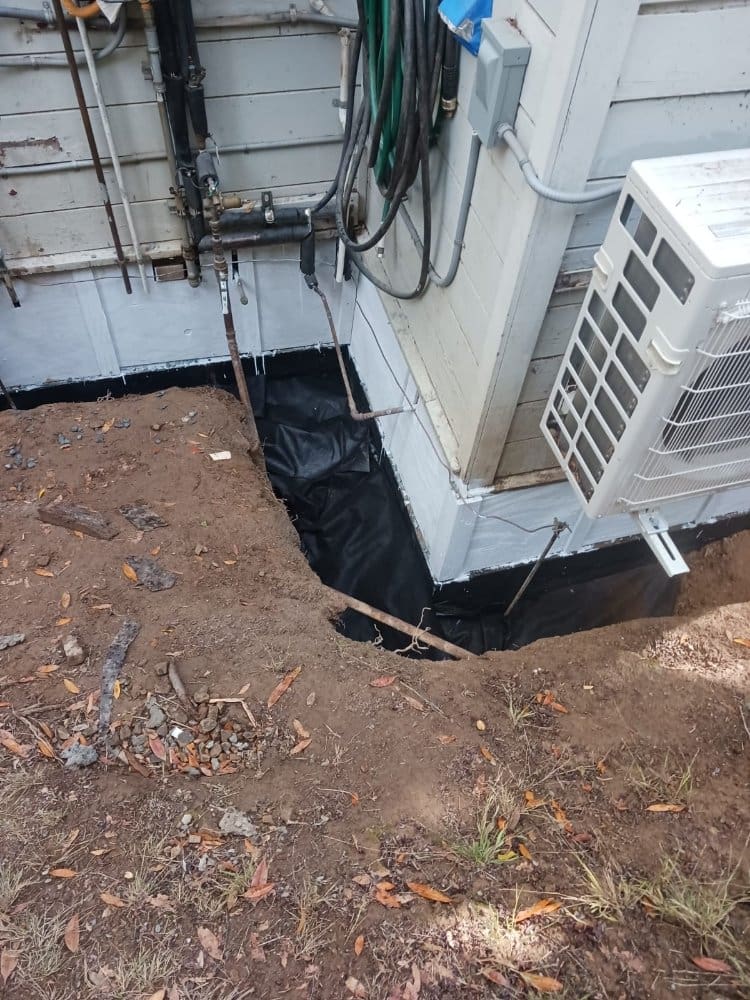Understanding Building Footings
Footings are critical structural elements that transfer the load of a building to the ground, ensuring stability and preventing settlement or movement. Typically made of concrete, footings play a key role in evenly distributing the weight of the structure across the soil.
Functions of Footings
The primary functions of footings are as follows:
- Load Distribution: Footings help spread the weight of the building over a larger area, reducing pressure on the soil below.
- Preventing Settlement: A stable base provided by footings prevents uneven settling, which can cause cracks and structural damage.
- Anchoring the Structure: Footings anchor the building to the ground, providing resistance against lateral forces like wind or seismic activity.
Types of Footings
Different footing types are designed to suit various soil conditions, building designs, and load requirements:
- Strip Footings: Continuous concrete strips supporting load-bearing walls. Common in residential construction.
- Spread Footings: Distribute the load from a column or pier over a larger area, typically used when soil has a low bearing capacity.
- Raft or Mat Foundations: A large slab supporting the entire building, often used when soil conditions are poor.
- Pile Foundations: Deep foundations driven into the ground to reach stable layers, ideal for soft or unstable surface soils.
Design Considerations for Footings
Designing effective footings requires careful attention to several factors:
- Soil Characteristics: Soil type, bearing capacity, and moisture content determine footing design. Soil tests are essential.
- Load Requirements: The total load of the building, including both live (occupants, furniture) and dead (building materials) loads, must be factored in.
- Building Codes and Regulations: Compliance with local codes ensures the footings meet safety standards.
- Environmental Factors: Factors like frost depth, water table levels, and seismic activity must be considered during design.
Common Challenges in Footing Construction
Despite thorough planning, challenges can arise during footing construction:
- Misplaced Footings: Incorrect placement can lead to uneven load distribution and structural issues.
- Water Table Issues: Building footings below the water table may weaken the concrete and compromise integrity.
- Soil Variability: Inconsistent soil conditions may require stabilization or alternative footing designs to ensure stability.
At Bedrock Foundation Builders, our expertise ensures that these challenges are identified and addressed, providing you with a secure foundation for your structure.
Footing Types and Their Applications
| Footing Type | Description | Common Applications |
|---|---|---|
| Strip Footings | Continuous strips of concrete supporting load-bearing walls. | Residential buildings with load-bearing walls. |
| Spread Footings | Isolated footings that spread the load from columns over a larger area. | Buildings with individual columns. |
| Raft or Mat Foundations | Large slabs covering the entire building, distributing loads evenly. | Structures on weak or expansive soils. |
| Pile Foundations | Deep foundations using piles driven into the ground to reach stable layers. | High-rise buildings, bridges, or structures on soft soils. |
In-Depth Questions and Answers
1.What are the signs of footing failure?
Signs of footing failure include:
- Cracks in Walls or Floors: Horizontal or stair-step cracks indicate uneven settling.
- Doors and Windows Misalignment: Difficulty in opening or closing can result from structural shifts.
- Uneven Floors: Sloping or sagging floors are often a sign of foundation issues.
If you notice any of these signs, it’s essential to consult with professionals like Bedrock Foundation Builders for a thorough assessment.
2. How does soil type affect footing design?
Soil type plays a major role in footing design:
- Clay Soils: Prone to expansion and contraction, requiring deeper or wider footings.
- Sandy Soils: Good drainage, but may need larger footings to distribute loads.
- Rocky Soils: High bearing capacity allows for smaller, more compact footings.
Understanding soil properties ensures footings are designed to provide adequate support and prevent future problems.
3. Why is reinforcement important in footings?
Reinforcement, typically with steel bars (rebar), is crucial for:
- Increasing Load-Bearing Capacity: Reinforced footings can support higher loads without cracking.
- Preventing Cracks: Reinforcement helps distribute stresses evenly, reducing the risk of cracks caused by settling or shifting.
Proper reinforcement is vital for the longevity and stability of the structure.
4. How can I protect my footings from water damage?
Water can significantly damage footings, but you can protect them by:
- Ensuring Proper Drainage: Install drainage systems to direct water away from the foundation.
- Waterproofing: Apply waterproof coatings to prevent moisture penetration.
- Regular Inspections: Conduct periodic checks for water damage or erosion.
Implementing these measures can help prevent costly repairs and maintain the integrity of your foundation.
Conclusion
Building footings are vital to a structure’s stability and longevity. They ensure proper load distribution, prevent settlement, and anchor the building against lateral forces. Proper design, material selection, and adherence to construction standards are key to creating durable, reliable footings.
If you’re planning a construction project or dealing with foundation issues, Bedrock Foundation Builders is here to assist. From seismic retrofitting to structural repairs, our team offers expert guidance and services to ensure your foundation remains secure and robust.
Don’t wait for small issues to become major problems—contact us today for expert advice, or visit our website to learn more about how we can help protect your property from structural challenges. Together, we’ll lay the foundation for a safer, more durable future.



Comments are closed